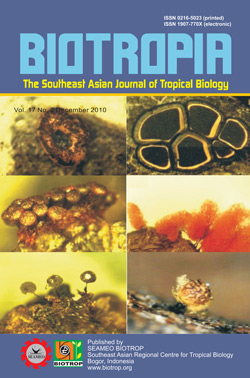
Tags
SACCHARIFICATION OF CORNCOB USING CELLULOLYTIC BACTERIA FOR BIOETHANOL PRODUCTION
Content Language : English

The use of cellulose degrading enzyme (cellulases) for hydrolysis of lignocellulosic material is a part of bioethanol production process. In this experiment, delignified corncob, its cellulose fraction and alpha cellulose were used as substrates to produce fermentable sugar by using three local isolates of celluloytic bacteria (C5-1, C4-4, C11-1 and Cmix ; mixed cultures of three isolates), and Saccharomyces cereviseae to produce ethanol. The results showed that all isolates of cellulolytic bacteria can grow on cellulose fraction better than on delignified corncob, and alpha cellulose. The highest hydrolytic activity produced from cellulose fraction was by isolate C4-4, which liberated 3.50 g/l of total sugar. Ethanol can be produced by mixed culture of bacteria and yeast, but because of competitive growth, the fermentation only produced 0.39-0.47 g/l of ethanol.
Link

This work is licensed under a Creative Commons Attribution-NonCommercial-NoDerivatives 4.0 International License.
